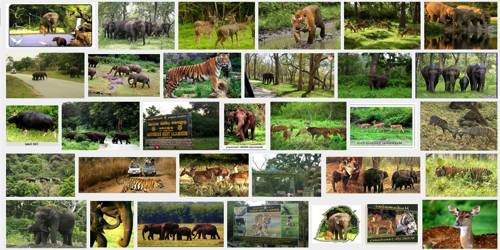Wildlife Conservation in India
Wildlife means all the flora and fauna, which are not domesticated by humans. It includes animals, plants, and microorganisms. The protection of wildlife has a long tradition in India. Many stories of Panchtantra and Jungle Books, etc. have stood the test of time relating to the love for wildlife. These have a profound impact on young minds.
In 1972, a comprehensive Wildlife Act was enacted, which provides the main legal framework for conservation and protection of wildlife in India. The two main objectives of the Act are; to provide protection to the endangered species listed in the schedule of the Act and to provide legal support to the conservation areas of the country classified as National parks, sanctuaries and closed areas. This Act has been comprehensively amended in 1991, making punishments more stringent and has also made provisions for the protection of specified plant species and conservation of endangered species of wild animals.
There are 92 National parks and 492 wildlife sanctuaries covering an area of 15.67 million hectares in the country.
Wildlife conservation has a very large ambit with unbounded potential for the well-being of humankind. However, this can be achieved only when every individual understands its significance and contributes his bit. According to statistics currently, India is home to about 390 species of mammals, 210 amphibians, 455 reptiles, 1,230 bird species and 30,000 species of insects. This makes India one of the richest country in terms of wildlife. As far as India’s plant life is concerned there are 1500 species of plants which are of different origins.

For the purpose of effective conservation of flora and fauna, special steps have been initiated by the Government of India in collaboration with UNESCO’s ‘Man and Biosphere Program’.
Special schemes like Project Tiger (1973) and Project Elephant (1992) have been launched to conserve these species and their habitat in a sustainable manner. Project Tiger has been implemented since 1973. The main objective of the scheme is to ensure maintenance of the viable population of tigers in India for scientific, aesthetic, cultural, and ecological values, and to preserve areas of biological importance as a natural heritage for the benefit, education, and enjoyment of the people. Initially, the Project Tiger was launched in nine tiger reserves, covering an area of 16.339 sq. km, which has now increased to 27 tiger reserves, encompassing 37,761sq. km of tiger habitats distributed in 17 states. The tiger population in the country has registered an increase from 1,827 in 1972 to 3,642 in 2001-2002.
Apart from this, some other projects such as Crocodile Breeding Project. Project Hangul and conservation of Himalayan Musk deer have also been launched by the Government of India.
















